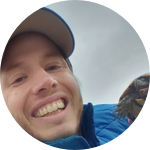About This Project
Welcome to the coolest ecosystem you've never heard of - the anchialine ecosystem! Anchialine habitats are coastal ponds, pools, and caves with underground connections to sea- and fresh waters. They are rare and have tons of endemic organisms, many of which are threatened. We're using environmental DNA (eDNA - DNA found in the water itself) to monitor anchialine shrimps in Hawaii. We will use common species kept in the lab to develop an eDNA toolkit for monitoring rare, endangered species.
Ask the Scientists
Join The DiscussionWhat is the context of this research?
Anchialine habitats are rare and understudied worldwide. Hawaii has the largest concentrations of these habitats, where different shrimps are the most conspicuous animals:
We study a common shrimp, Halocaridina rubra, which is both an anchialine and Hawaiian endemic species. However, there are 7 other anchialine shrimp found in Hawaii, many of which are endemics and/or endangered. We know virtually nothing about these species because they're so rare - they have only been observed haphazardly as single individuals in a few specific habitats. Environmental DNA (eDNA) offers a way to learn about these species. We will use lab populations of the common species to develop an eDNA toolkit to study the distribution and genetics of the rare species.
What is the significance of this project?
Much of the anchialine ecosystem is found in the underground waters below the anchialine ponds. The only way to unveil this ecosystem is to use creative tools like eDNA. eDNA has been used previously to study rare and endangered species and basically consists of filtering water from the habitats, extracting DNA from the filter, and then screening for the presence of DNA fragments specific to the species of interest. We can therefore determine whether a species is present without ever actually observing it (for example, if it is underground and not in the ponds themselves). We also know from the common species of shrimp that there can be unique genetic lineages across the islands. We can address this for the rare species by sequencing and analyzing their eDNA.
What are the goals of the project?
We will develop an eDNA toolkit using populations of the H. rubra we already have in the lab. This will include filtering water from our lab aquaria, extracting eDNA from the filters, and screening for H. rubra using a technique called digital PCR:
This will let us to determine best practices.
Using these data, we will then create digital PCR probes for the rare species (8 in total) and filter water from at least 25 anchialine habitats of interest across Hawaii. We will extract and screen eDNA from these habitats for the species of interest to determine their potential ranges and if certain areas warrant special conservation concern.
Finally, we will examine population genetics of the rare species by sequencing their eDNA.
Budget
Our project require filtering a large amount of water - up to many gallons per sample. While other funds will be used to process samples, house shrimp, and do fieldwork, here we are asking for support to cover the cost of a water pump that will be used for eDNA extractions (https://www.geotechenv.com/per...).
Endorsed by
 Project Timeline
Project Timeline
The project should take about a year in total. We will first develop the eDNA toolkit over 2-3 months by using our lab colonies of H. rubra to determine which molecular markers we should use, how much water we'll need to filter to detect animals, and how molecular signals correspond to numbers of animals. We'll then travel to Hawaii and sample water from ~50 habitats over 1-2 weeks. We'll spend the next 2-3 months processing those signals to detect H. rubra and other species.
Jan 13, 2023
Project Launched
Mar 01, 2023
First tests for H. rubra eDNA in lab aquaria
Apr 01, 2023
Troubleshoot eDNA protocols in the lab
May 01, 2023
Perfect eDNA toolkit through additional lab H. rubra experiments
Jun 01, 2023
Travel to Hawaii and filter water for eDNA
Meet the Team
Team Bio
The main team conducting this work will consist of myself, a graduate student in my lab, and an undergraduate researcher. We will also work with several collaborators in Hawaii, including governmental employees, middle school teachers, and reserve managers.
Justin Chase Havird
I'm interested in evolution, ecology, and physiology. Much of the work in my lab centers on how mitochondria influences these processes. Find out more about our work here:
Lab Notes
Nothing posted yet.
Additional Information
Anchialine habitats and organisms are of cultural importance to native Hawaiian peoples. These habitats were important sources of freshwater, acted as holy places, are described in legends, and were even used as royal birthing pools, all long before Europeans came to Hawaii. Anchialine shrimps were used in native fishing practices as well and H. rubra is known locally as opae' ula (translated as "tiny red shrimp").
Our anchialine work involves local collaborators and native Hawaiians. These stakeholders have expressed interest in this project, especially because we are able to study these important organisms without directly disturbing the native ecosystem or taking shrimp from the wild.
We will continue to involve these collaborators in this work, and will educate local schoolchildren about anchialine ecosystems through involving them in the water filtering. While we will develop the eDNA toolkit and lead initial sampling efforts, we will also train local scientists and managers in this technique, hopefully so these habitats can be continuously monitored.
Project Backers
- 7Backers
- 100%Funded
- $2,691Total Donations
- $384.43Average Donation

